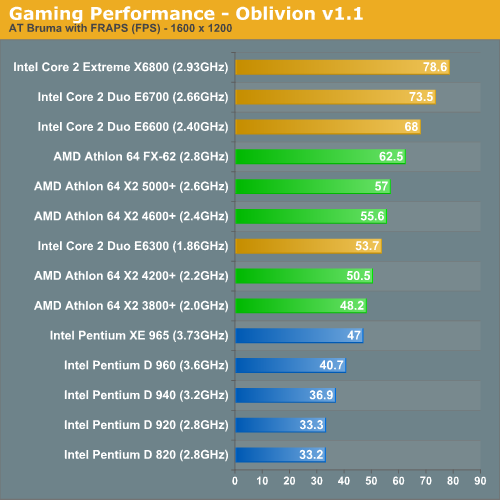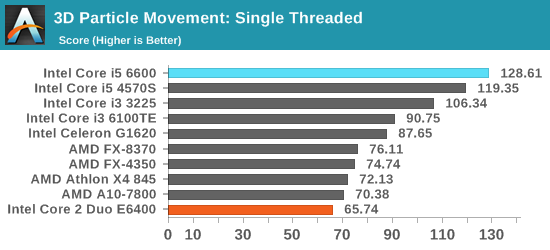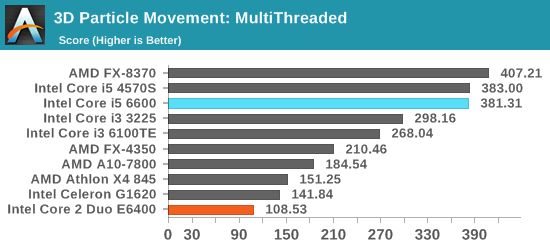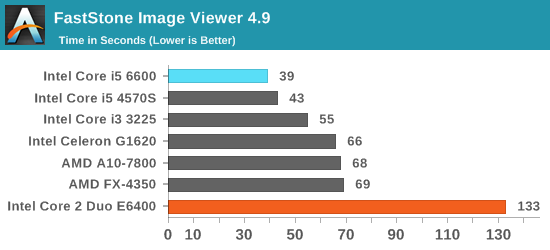Ten Year Anniversary of Core 2 Duo and Conroe: Moore’s Law is Dead, Long Live Moore’s Law
by Ian Cutress on July 27, 2016 10:30 AM EST- Posted in
- CPUs
- Intel
- Core 2 Duo
- Conroe
- ITRS
- Nostalgia
- Time To Upgrade
Core: Performance vs. Today
Looking back at Anand’s original review, and at a time where CPU performance made a lot of difference for gaming frame rates at 1600x1200, the conclusion was quite startling.
Intel's Core 2 Extreme X6800 didn't lose a single benchmark in our comparison; not a single one. In many cases, the $183 Core 2 Duo E6300 actually outperformed Intel's previous champ: the Pentium Extreme Edition 965. In one day, Intel has made its entire Pentium D lineup of processors obsolete.

Imagine something like that happening today. (Actually, if you believe what we’ve been told, AMD’s upcoming AM4 platform with Zen and Bristol Ridge might make its current desktop platform obsolete, but that’s a slightly different discussion because of how integrated graphics has adjusted the landscape for CPU focused silicon somewhat.)
That’s Intel vs. Intel though, against AMD it was just as damning.
Compared to AMD's Athlon 64 X2 the situation gets a lot more competitive, but AMD still doesn't stand a chance. The Core 2 Extreme X6800, Core 2 Duo E6700 and E6600 were pretty consistently in the top 3 or 4 spots in each benchmark, with the E6600 offering better performance than AMD's FX-62 flagship in the vast majority of benchmarks.
However, Core 2 Duo has now been out for 10 years. I’ve pulled up some benchmark data from our database to see if we have any matches to compare against processors that cost $214 today. The Core i5-6600 fits our bill perfectly, and there are two benchmarks which match up. I’ve also dotted the graphs with a range of more recent AMD and Intel processors for progression.



Our 3D Particle Movement is more for idealized synthetic workloads, however FastStone is all about image conversion and favors high frequency, high single threaded performance.
Naturally, modern processors nearing 4.00 GHz have a large advantage over the 2.13 GHz version of Core 2 Duo, as well as multiple generations of improved microarchitecture designs and smaller lithography nodes for power efficiency. However, has any processor family had as much nostalgic longevity as the consumer launch of Core? One could argue that while Core put Intel on top of the heap again, Sandy Bridge was a more important shift in design and as a result, many users went from Conroe to Sandy Bridge and have stayed there.










158 Comments
View All Comments
fanofanand - Thursday, July 28, 2016 - link
Ian, your reviews are always too notch. You have incredible knowledge, and your understanding of both CPU and memory architecture etc is unparalleled in journalism. Ignore the trolls, this was a fantastic article.extide - Wednesday, July 27, 2016 - link
Different editors for different content. Honestly I thought this was a great piece. I think this site is not quite up to what it was back then, just go read the articles for Fermi, or when Bulldozer released and stuff, much more deep dives into the architecture. I realize that Intel and the other manufacturers may not always be willing to release much info, and they seem to release less these days but I don't know -- the site feels different.Honestly, and I am pretty forgiving, being as late as this site has on the recent GPU reviews is pretty inexcusable. Although, that is obviously nothing to do with Ian, I always like Ian's articles.
Ian Cutress - Wednesday, July 27, 2016 - link
Thanks! :)fanofanand - Thursday, July 28, 2016 - link
The Pascal review was pretty damn deep, not sure how much farther you expect them to dive. That said, it was very, very late.Michael Bay - Thursday, July 28, 2016 - link
ADHD millennial detected.Notmyusualid - Thursday, July 28, 2016 - link
Hey Rain Cloud!I enjoyed it, as did many others here - try reading the friendly discussion!
tipoo - Wednesday, July 27, 2016 - link
I like articles like these. Sometimes certain processors stick around as the baseline in my brain even after a decade (holy hell!). Core 2 Duo is always a reference point for me, so is a 3GHz P4.rocky12345 - Wednesday, July 27, 2016 - link
Yea I still have a Q6600 Core2Quad running strong in the front rooom OC to 3700Mhz been running like that since day 1.wumpus - Thursday, August 4, 2016 - link
Wow. I've assumed that they would at least burn out so that they would need replacement (like my old super celeries). I'm sure you can measure a speed increase between a modern i5 and yours, but it would be hard to notice it.chekk - Wednesday, July 27, 2016 - link
Nice, thanks Ian. Interesting to look back and then ahead.I still use my E6400 in a media playback machine using the first "good" integrated graphics, the NVidia 9300. Since it runs at stock frequency @ 1V (VID spec is 1.325), it's pretty efficient too.